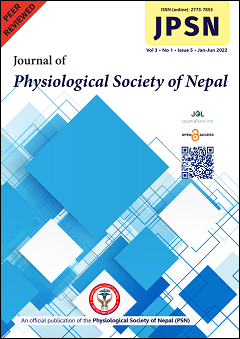Visual outcome of fitting Rose-K2 XL lens in a case with advanced keratoconus
DOI:
https://doi.org/10.3126/jpsn.v3i1.57766Keywords:
Keratoconus, Visual outcomeAbstract
Keratoconus is a progressive non inflammatory bilateral but usually asymmetric corneal disease characterised by paraxial stromal thinning and weakening that leads to corneal surface distortion. Rose K2 XL lens has an aspherical optical zone and employed in the fitting of irregular corneas for vision and comfort while maintaining corneal health. Rose K2 XL lens was fitted in a 35 year old male presented to contact lens clinic of BP Koirala Lions Centre for Ophthalmic Studies, Kathmandu having advanced keratoconus. His presenting best corrected visual acuity was 6/36 in right eye with plano and 2/60 in left eye with plano with no improvement with glasses.The corneal topography performed with Bon Sirius showed keratoconus compatible in both eyes. Rose K2 XL is a mini scleral lens which saw excellent fitting attending visual acuity of 6/12 in both eye. Rose K2 XL lenses are of viable alternative in the visual rehabilitation of patients with advanced keratoconus.
Downloads
Downloads
Published
How to Cite
Issue
Section
License
Copyright (c) 2023 Journal of Physiological Society of Nepal

This work is licensed under a Creative Commons Attribution-NonCommercial 4.0 International License.

